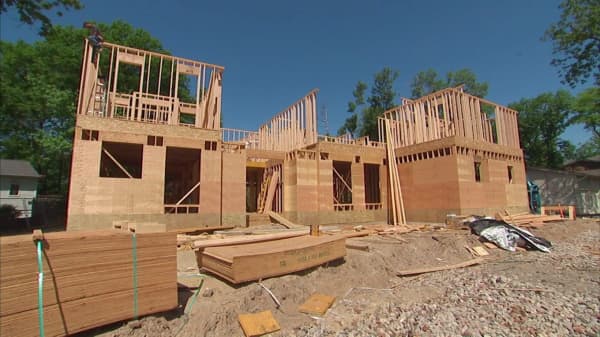If there's one price investors watch as closely as the price of the stocks in their portfolio, it's the price of their home. But if you rely on internet-based property valuation tools like Zillow to check up on what's likely to be the most important asset you ever own, you're overlooking an important, real-time market source for property values.
The housing market and the stocks of companies that support it have been one of the hottest investment themes since the end of the Great Recession. That's why I think recent action in housing-related stocks is worth reviewing: The performance suggests investors must ask, Could the residential real estate rally be coming to an end?
The "can't miss" stocks that make up this group are in retreat. The leader of the pack, Home Depot, recently went from being up in 2017 by about 18 percent to up only 10 percent. Not a terrible return, but the slide in its stock price comes as major stock indexes have been hitting new highs. That strikes me as a bit unusual, because it has traditionally been a strong leadership stock.
Lowe's is in a similar position and, even worse, down approximately 10 percent in the past three months. Maybe Amazonification of the DIY home-improvement business is to blame. But for two retailers that were supposedly immune from Amazon, their recent decline is troubling.
Whirlpool's stock was clobbered after it delivered earnings and sales that came in lower than Street expectations. It's a stock that's been down all year. Then there's Stanley Black & Decker, which is down from its recent high, by approximately 15 percent. PPG Industries, manufacturer of construction material brands, like Glidden paints and Liquid Nails glue, is down approximately 7 percent from its recent high.
These stock declines aren't disasters by any stretch. But I view them as an early warning sign from the market that something is amiss in housing.
More from ETF Strategist:
What millionaires are signaling from inside their stock portfolios
401(k) bets on stock market keep increasing for everyone at every age
10 years after housing crisis, are mortgage stocks a good bet?
Single-family home prices have been hitting record after record. But inventory is low, and home building hasn't been able to keep up with demand. But the actual number of existing home sales has been stagnating, slipping this past June by 1.8 percent after rising the prior month by 1.1 percent, and dropping by 2.3 percent in the month before that. While there was a little improvement in pending sales of existing homes in June, the supply of homes for sale nationally in June was 7.1 percent lower than June 2016 and has now fallen annually for 25 consecutive months.
The good news is that with rising home prices, mortgage defaults have plunged since peaking in 2010. (Presumably, if one is delinquent on their mortgage, they could sell the home for more than the amount owed on the mortgage.) The bad news is that new single-home construction is nowhere close to adding adequate inventory. That means the U.S. economy is losing the housing multiplier effect that is caused by first-time and move-up home buyers. That's more like a slow leak of air, as opposed to the housing bubble that popped 10 years ago. But I think the low inventory is having an effect on the companies that feed off the housing market.

















